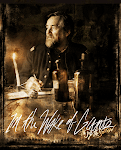 The Big Burn: The Story Of The Largest Wildfire In The History Of The United States, Timothy Egan, Houghton Mifflin Harcourt; 325 pp., map,notes, index, illustrations, hardcover $27.00, paper cover $15.95
The Big Burn: The Story Of The Largest Wildfire In The History Of The United States, Timothy Egan, Houghton Mifflin Harcourt; 325 pp., map,notes, index, illustrations, hardcover $27.00, paper cover $15.95 Egan, winner of a National Book Award for The Worst Hard Time, a social history of the Depression-era Dust Bowl in Oklahoma, masters personal, public and governmental sources to offer a striking and personality driven narrative of a disaster. In the Northwest during August 1910, 3,000 fires converged into one and ith at times nearly hurricane-force winds then for two days became fire that humbled even politicians. Nearly over three million acres of forest were utterly destroyed in the Bitterroot Mountains as 10,000 firefighters fought it. In their entirety, five towns were reduced to ashes and 85 of the firefighters died.
Gifford Pinchot, founder of the National Forest Service, and Theodore Roosevelt, while president of the U.S., had put 180 million acres of Northwest Forest land into a national forest created the National Forest Service to manage it. The first forest rangers were nicknamed TR's Green Rangers. The stories of Ed Pulaski, Bill Greely, and Bill Weigle with their families and the citizens of the towns are told with a narrative drive that is engaging and often times compelling.
 Fighting the fire, fighting those who resisted the national forests movement and others who viewed the Northwest forests as moneymaking opportunities, Pinchot, Roosevelt and the Forest Rangers are nearly destroyed by their inability to stop the blaze. Former president Roosevelt struggles with current president Taft. Egan dwells on the inhabitants and the geography, details the birth and rampage of the firestorm. Hearts and bodies are broken as the inferno consumes men, women, wildlife and the forest as policy debates are being conducting in the nation's capitol. Fire fighting at all costs? Is fire nature's way of forest management? Nature for nature's sake or nature for economic capital?
Fighting the fire, fighting those who resisted the national forests movement and others who viewed the Northwest forests as moneymaking opportunities, Pinchot, Roosevelt and the Forest Rangers are nearly destroyed by their inability to stop the blaze. Former president Roosevelt struggles with current president Taft. Egan dwells on the inhabitants and the geography, details the birth and rampage of the firestorm. Hearts and bodies are broken as the inferno consumes men, women, wildlife and the forest as policy debates are being conducting in the nation's capitol. Fire fighting at all costs? Is fire nature's way of forest management? Nature for nature's sake or nature for economic capital?Egan's The Big Burn has several compelling story lines: heroism against the odds, survival during a disaster, personal and economic catastrophe, nature against itself, and nature against man. With the centennial remembrance of the disaster, Egan's narrative brings an immediacy that this reader thoroughly enjoyed.


No comments:
Post a Comment